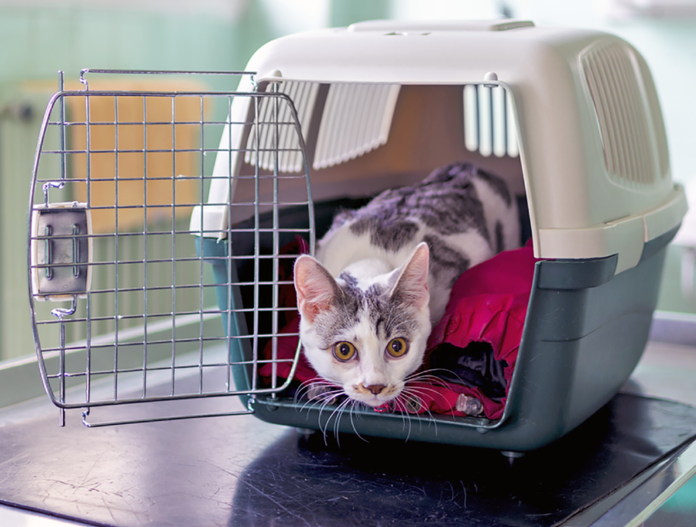Cat owners and cats alike often dread veterinary visits. It’s a struggle to get the cat in a crate, and you may listen to woeful meows all the way to the veterinary clinic. Nothing seems to assure your cat that everything will be OK. It doesn’t have to be this way! With some foresight and preparation, you can make the trip easier on both of you. Use these steps:
1. Train your cat to be comfortable in a carrier ahead of time. Purchase a sturdy carrier. Avoid cardboard ones that can become a mass of shredded cardboard with an upset cat. Even a soft carrier can be a bad choice for a cat who can scratch through mesh. Once you’ve got a carrier, leave the door propped open in your house (if it has carrying straps or anything the cat can get caught on, remove them for this training time). Occasionally toss some extra special treats or a toy in the carrier. Once your cat is going in freely for the treats, close the door briefly, tossing in more tasty treats. Gradually build up the time the door is closed, starting with just a few seconds at a time.
2. Consider using helpers like feline pheromone spray or some catnip if your cat relaxes with catnip. Some cats get overly excited with catnip, however, which would make it a poor choice for them! The pheromone spray can be applied to a towel in the carrier.
3. Bring some of those favorite treats with you to give your cat at the clinic. (Obviously, if your cat is traveling for fasting bloodwork, you will need to wait until the end of the visit, but otherwise, ration those treats out over the time at the clinic.)
4. Find out if your veterinary clinic has a separate waiting area for cats or if there is a private waiting room. This is better than having your cat terrified by a curious or barking dog. Have a towel to cover your cat’s carrier if you must be around other pets.
5. In the exam room, talk calmly to your cat in a normal voice. Avoid clutching your cat or invading her personal space. Avoid sounds like shhh that may mimic a hissing cat.




